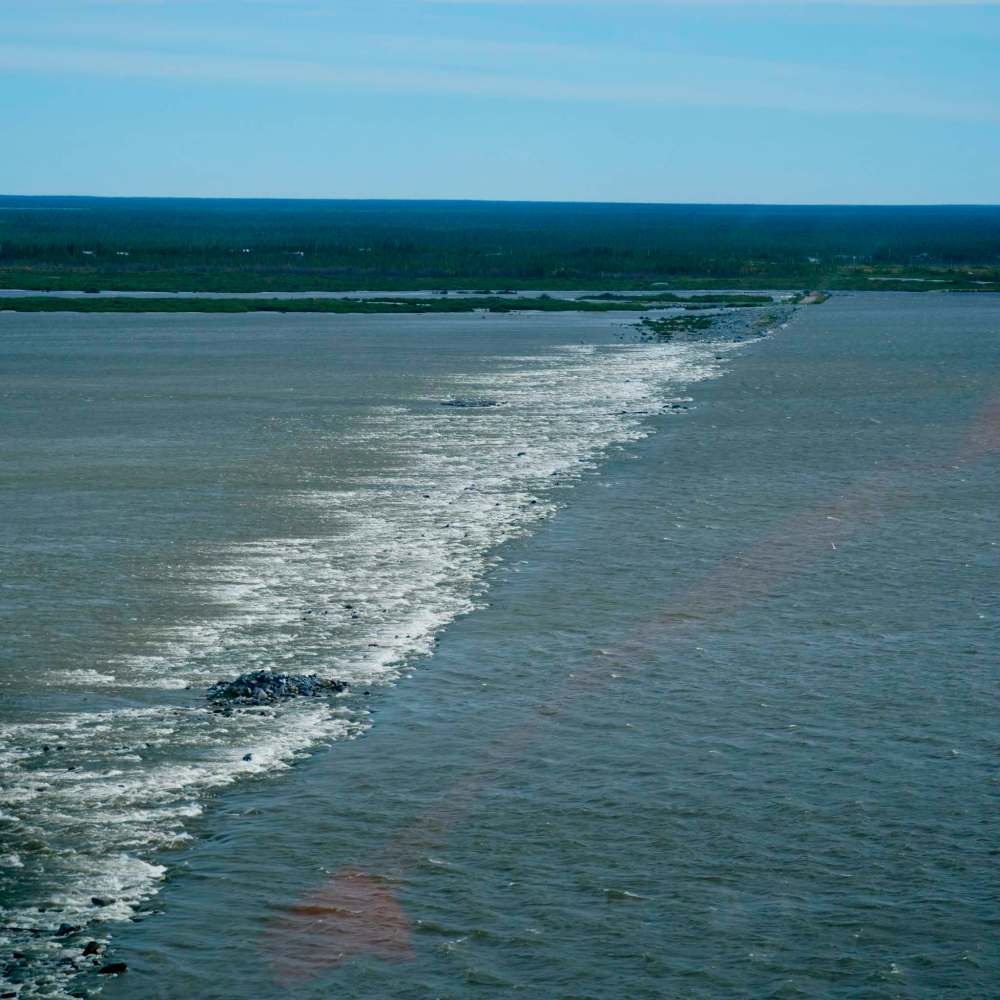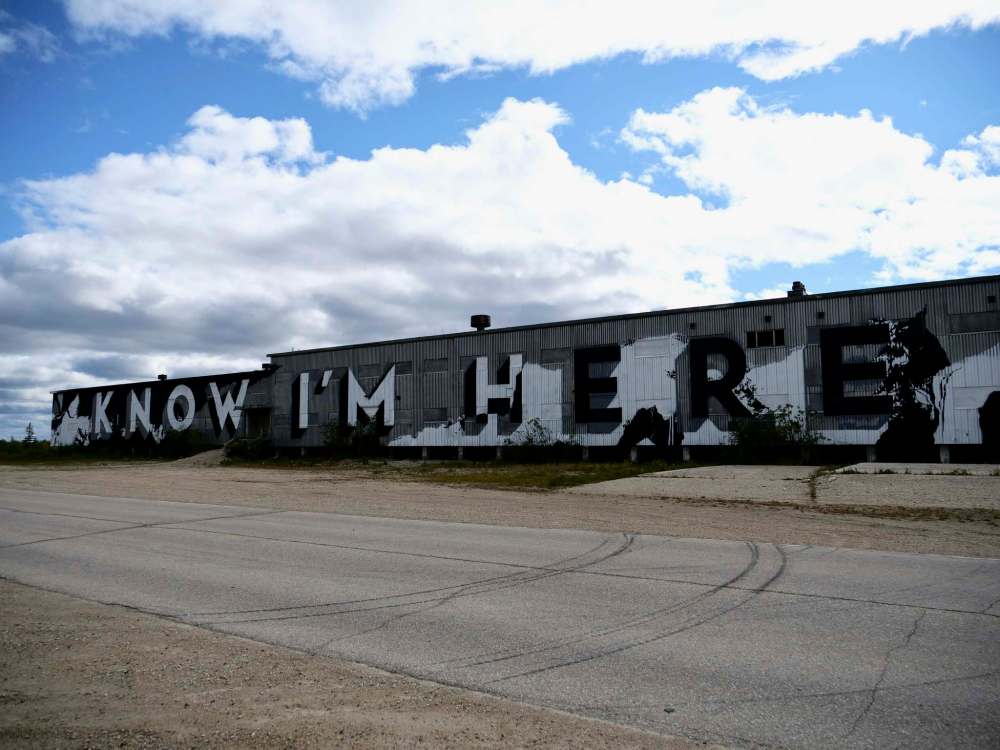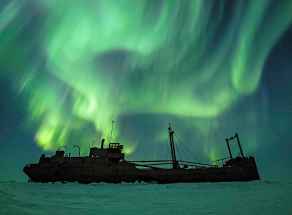Manitoba’s microcosm Churchill's location on the edge of three distinct biomes draws scientists from around the world researching the devastating impacts of global climate change
Read this article for free:
or
Already have an account? Log in here »
To continue reading, please subscribe:
Monthly Digital Subscription
$0 for the first 4 weeks*
- Enjoy unlimited reading on winnipegfreepress.com
- Read the E-Edition, our digital replica newspaper
- Access News Break, our award-winning app
- Play interactive puzzles
*No charge for 4 weeks then price increases to the regular rate of $19.00 plus GST every four weeks. Offer available to new and qualified returning subscribers only. Cancel any time.
Monthly Digital Subscription
$4.75/week*
- Enjoy unlimited reading on winnipegfreepress.com
- Read the E-Edition, our digital replica newspaper
- Access News Break, our award-winning app
- Play interactive puzzles
*Billed as $19 plus GST every four weeks. Cancel any time.
To continue reading, please subscribe:
Add Free Press access to your Brandon Sun subscription for only an additional
$1 for the first 4 weeks*
*Your next subscription payment will increase by $1.00 and you will be charged $16.99 plus GST for four weeks. After four weeks, your payment will increase to $23.99 plus GST every four weeks.
Read unlimited articles for free today:
or
Already have an account? Log in here »
Hey there, time traveller!
This article was published 23/10/2020 (1873 days ago), so information in it may no longer be current.
CHURCHILL — There is something special about this town.
People who have been here know, though it is challenging to describe. Those who haven’t are told tales of a nearly mystical small community, the unique geography and the magnificent wildlife.
Exactly what makes it such a special place is hard to define, but whatever that intrinsic character is, it acts as a magnetic force for humans and animals alike.
Every summer — as if on cue — the sleek white backs of more than 50,000 beluga whales begin peeking out of the waters of southwestern Hudson Bay as they return to the estuaries of northern Manitoba. Their fidelity to this summer habitat is centuries old, passed on from one generation to the next. This loyalty to the region ensures for as long as this site is safe, these alien-like, curious whales will continue to return.
These lands are also inescapable for the hundreds of fluffy white apex predators that meander across the sea ice as it breaks up and melts, landing them in the area for the summer months. The polar bears camouflage amongst the ancient quartzite rocks and rolling hills that lead into the Hudson Bay lowland marshes. They wait out their fasting season, ambling along the coast awaiting the return of the sea ice, their primary habitat.
The magnetic force seems to apply to the people of the town, too. Some never leave, and of those who do, many come back.
Eden Lavallee, 31, was born in Churchill to Inuit and Cree parents. Riding a shuttle bus heading out to a community barbecue and music festival, she recalls her graduating class in high school consisted of fewer than a dozen students (and only one boy).
Inaptly named Winterfest, the celebration had been delayed due to the novel coronavirus pandemic and was instead held in August; bringing some of the winter season into the last dregs of summer.
Lavallee has travelled and worked around the world, from Italy to Australia, but Churchill is home.

“It seems to attract very unique, different people from everywhere. I love seeing people who came here for a few days and ended up staying for 10 years,” she says as the shuttle rattles down the road.
As it overtakes a four-wheeler buzzing down the shoulder, Lavallee points out the window at the rider. “That’s him, actually! That’s Mike,” she says of only male from her graduating class, laughing at the coincidence of passing the one person she’d directly referenced in the short conversation.
With just under 900 people in the 2016 census, Churchill swells during peak tourist seasons when travellers and seasonal workers file into town. The community also grows during peak research times, as scientists from around the world use the town’s unique placement on the edge of three biomes — where an Arctic marine coast meets tundra and boreal forest — as a jumping-off point for study in the Subarctic.

And although most everything in 2020 has taken a back seat to the global COVID-19 pandemic, it’s important to note that the climate-change crisis remains an ongoing threat to life on earth, as evidenced by devastating wildfires in the U.S. and Australia, melting glaciers, increased frequency of extreme weather and rising sea levels.
Because Churchill offers a unique opportunity to understand the impacts of climate change much closer to home, the Free Press spent some time there recently.
The area has already witnessed an annual average of more than 2 C of warming. If greenhouse-gas emissions continue unabated, modelling used in the Prairie Climate Atlas shows that between 2050 and 2080, temperatures will rise to be more than 5 C higher than the average between 1976 and 2005.
Churchill is the perfect focal point for understanding the magnitude of climate change and how widespread the effects will be.
•••
David Barber is among the best-known researchers working in Churchill, holding the title of Canada Research Chair in Arctic system science. He is also director of the University of Manitoba’s Centre for Earth Observation Science.
Barber, who has spent decades studying climate in the region, says the pace of irreversible change is alarming.
“My first field trip to the Arctic was in 1981, and for the first 10 years of my career, as this young scientist, I was looking for evidence of the changing climate,” Barber says. “The models of the day said we should see the first and strongest signs of a changing global climate in the Arctic, and to be honest, the first 10 years, there was no evidence of that. We didn’t see it at all.
“So, I was quite a skeptic in the early days of my career. And then the subsequent decades — the next 10 years, and the next 10 years, and now I’m in the fourth 10 years of that — you know, it’s remarkable how much is changing.
“What I’ve been observing over my career is something a lot more rapid, with a lot more magnitude than any of us would have thought.”
Barber says it would be impossible to think of a single species that won’t feel the impact of the ongoing seismic shift. Climate change has the ability to alter nearly every facet of life in Churchill.
Take, for example, sea ice cover in Hudson Bay. For about 30 years, the bay has been losing approximately one day of ice cover every year. It varies from year to year; the ice broke up later than usual last spring, but the trend over time is clear.
A longer ice-free season can bring changes to the local shipping economy. It also affects when beluga whales come into and leave breeding grounds in the Churchill River. It changes how sea-ice algae grows. It means longer periods of time that polar bears are cast out of their primary habitat.
The effects on polar bear health and population decline have been well-documented; a recent paper casts doubt on whether the species will even survive to the end of the century.
More extreme weather events and permafrost thaw are putting critical infrastructure such as the northern rail line at risk, with potentially devastating consequences. Such was the case in 2017, when spring flooding washed out sections of rail, preventing train travel north of Gillam until repairs were completed in fall 2018.
Churchill, which relies heavily on rail shipments of everything from groceries to heating fuel and is a crucial link for tourism, was accessible only by air and, during the short summer and fall, water.
•••
There is some skepticism about the urgency of the threat within the community despite the volume of research done in the region.
“The only global warming we see in Churchill is Manitoba Hydro,” says Dave Daley, a Métis business owner and president of the local chamber of commerce.
Daley’s concerns are echoed by others. And it has less to do with denying climate science, and more to do with a lack of trust for outsiders, particularly government agencies and Crown corporations.

The example of this is more often cited than the interference in the Churchill River by Manitoba Hydro.
“Yes, I believe in global warming. Yes, I believe up in the High Arctic there’s a big change that’s happening, but they said the same thing about the ozone back in the day,” Daley says.
Daley expresses frustration that different scientists offer different messages on changes in the region. He expresses distrust of the information they provide, and ties it directly to Hydro’s actions over the past half-century.
“Yes, I believe in global warming. Yes, I believe up in the High Arctic there’s a big change that’s happening, but they said the same thing about the ozone back in the day.”
– Dave Daley, Churchill business owner and president of the local chamber of commerce
In 1976, Manitoba Hydro diverted approximately 85 per cent of the Churchill River’s water into the Nelson River at Southern Indian Lake in order to increase the productivity of hydroelectric development.
The consequences were dire for people and the habitat, and it happened virtually overnight. Lower water levels changed the water quality downstream of the diversion. It created new shorelines, which meant shorebird numbers declined. Less water meant the destruction of fish habitat and even jeopardized access for fish in some tributary rivers. That’s without even getting into the impacts upstream of the diversion and on the Nelson River side of the equation.
“Manitoba Hydro’s approach to development during this period was very different than today,” reads a 2013 report from the Crown corporation that considered the repercussions of the river’s diversion.
“Past projects involved much less engagement and consultation than would be considered acceptable today, and considerably less up-front planning with respect to minimizing environmental impacts. Avoidance, mitigation and enhancement measures were not always identified in advance of project construction.”

In 1999, Hydro built a weir across the Churchill River just upstream from the town. The rock structure was meant to increase water levels for a section of the river and enhance access, according to the Hydro report. However, residents say it’s done nothing to re-establish fish populations and has made the river more inaccessible, since boats cannot pass the weir.
“We used to be able to use the river all the time, all the way up to Hidden Creek,” Daley says as he taps on a map hanging on the wall of the cabin that stands beside his sled dogs kennels. After the weir was built, even in the winter, the river became unusable because the timing of water release often leads to broken, unsafe ice, he says.
There is no doubt there are changes going on in Churchill, but needless to say, with the fallout of the river diversion still being felt, it’s difficult to sort out which impacts are the result of such moves and which are the result of climate change.
Even for scientists, the confluence of effects from hydro development and climate change is poorly understood in some circumstances.
Manitoba Hydro largely controls the amount of fresh water flowing down the Churchill River and when it flows. The impact that has on the Hudson Bay ecosystem has remained largely unstudied to this point.

However, Barber and a team of researchers have spent the last few years researching the confluence of effects resulting from climate change and the actions of Manitoba Hydro (and Hydro Quebec) on the entirety of the ecosystem, studying everything from viruses to whales.
“So we’re trying to understand the relative contributions of each to how fresh water affects the bay,” Barber says. But he also leaves no room for doubt: while hydroelectric systems have an impact on the water system, climate change is responsible for the most “dramatic” changes in Hudson Bay.
The research is funded, in part, by Manitoba Hydro and the peer-reviewed data is expected to be published later this fall.
“(Hydro) joined as a funder of the project (because) they would like to know the reality of what happens with their fresh water that they’re managing, and they have the ability to adjust their activities if some significant result is found. That’s the whole purpose for them being involved,” Barber says.
•••
The subject of climate change elicits a variety of opinion in the community. Lavallee, on the bus ride to Winterfest, immediately voices her concern for the town’s most famous residents.
“It would be incredibly devastating if Churchill were to slowly lose the polar bears,” she says. “It would be a shame to find myself as an elderly woman and only have memories of polar bears living in the town, and being flooded with tourists every year.”

Climate change is likely to devastate the polar bear population, scientists say, but every aspect of the region will feel the depth of the shift, from economic prospects to tourism to Arctic foxes and frogs. It has the power to redefine the culture and identity of the North.
“I think the Arctic is shrinking and is going to continue to shrink,” says Jim Roth, a University of Manitoba researcher who has worked in the Churchill region on and off since 1994; he is currently working on understanding climate change’s impacts on food webs.
“We’re going to have invasion by boreal forest species,” Roth says in an interview at the Churchill Northern Studies Centre. “You’re just getting a contraction towards the North which, because there’s an ocean in the North, means there’s not a whole lot of terrestrial habitat that’s going to be remaining.
“This is an interesting place to come because you have the intersection of these biomes. But at what point will it change from three to two? I don’t know.”

The love of Churchill for those who stay, or for those who come back, is immense — as if they’re drawn back by the sound of the train’s whistle as it rolls in on Tuesdays, Thursdays and Saturdays; or the blare of the curfew horn that wails out every night at 10 p.m.
Residents unabashedly don Churchill swag designed for tourists. A large mural on a building just to the east of town declares, “Know I’m here,” and it has become a bit of a local catchphrase, giving strength and pride to a community that’s had to reinvent itself on more than one occasion. And might now, once again, find itself on such a precipice.
sarah.lawrynuik@freepress.mb.ca
Twitter: @SarahLawrynuik












